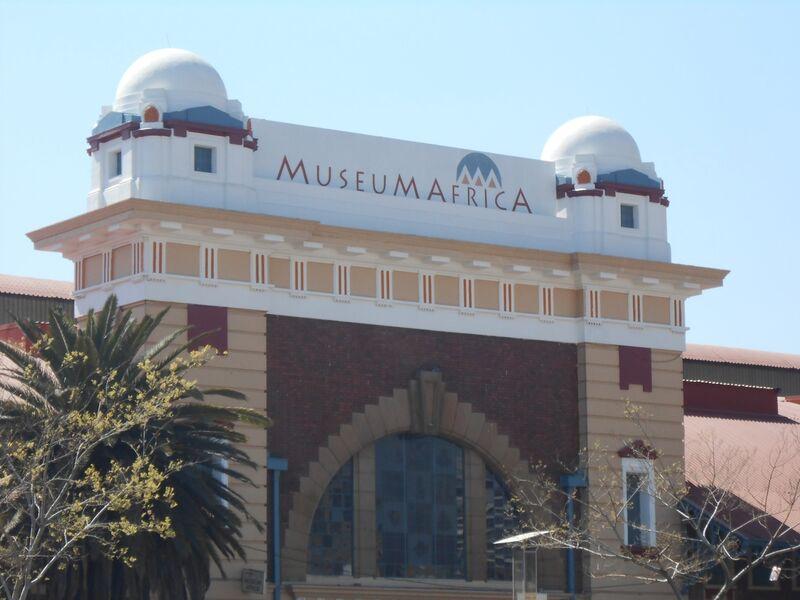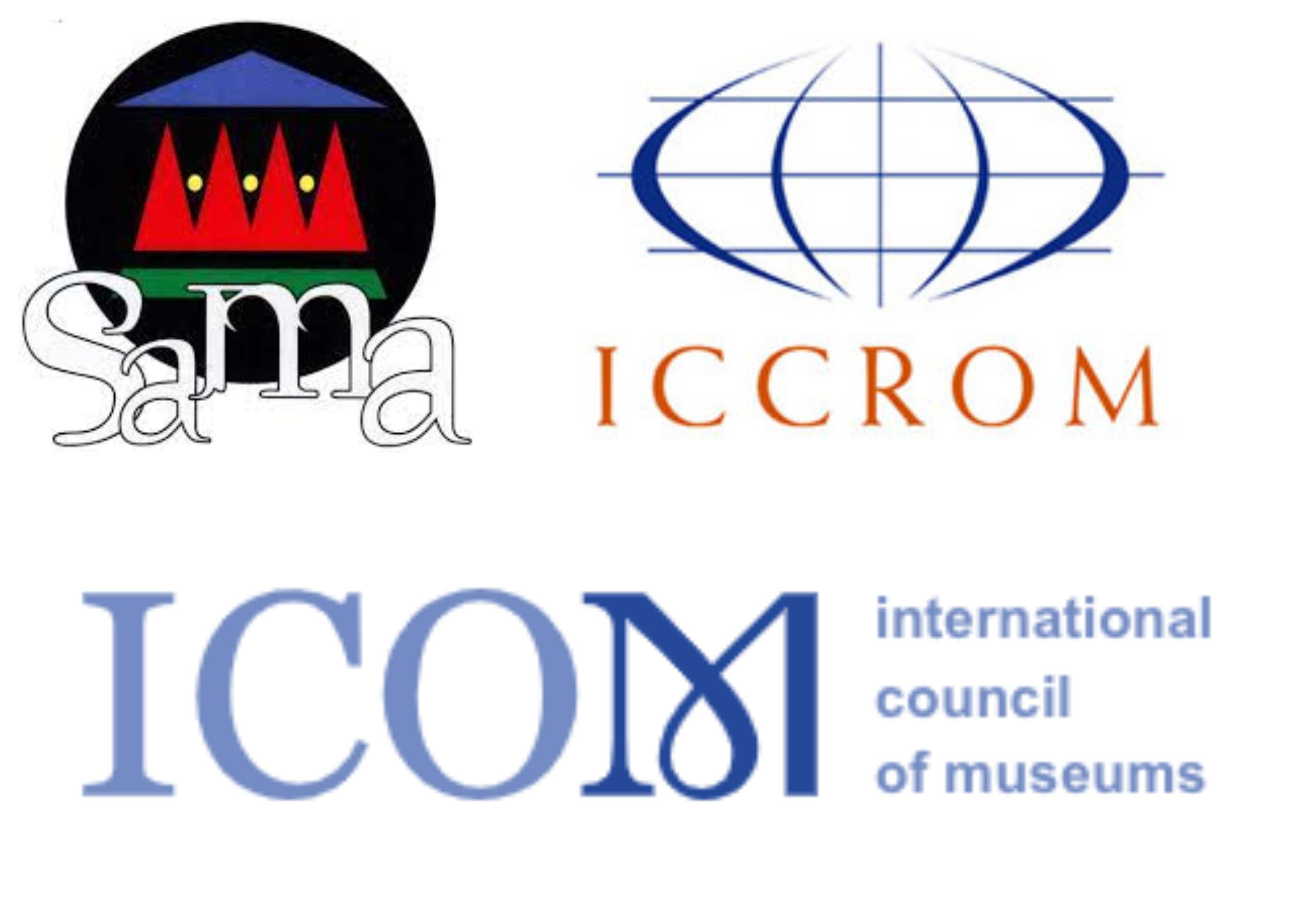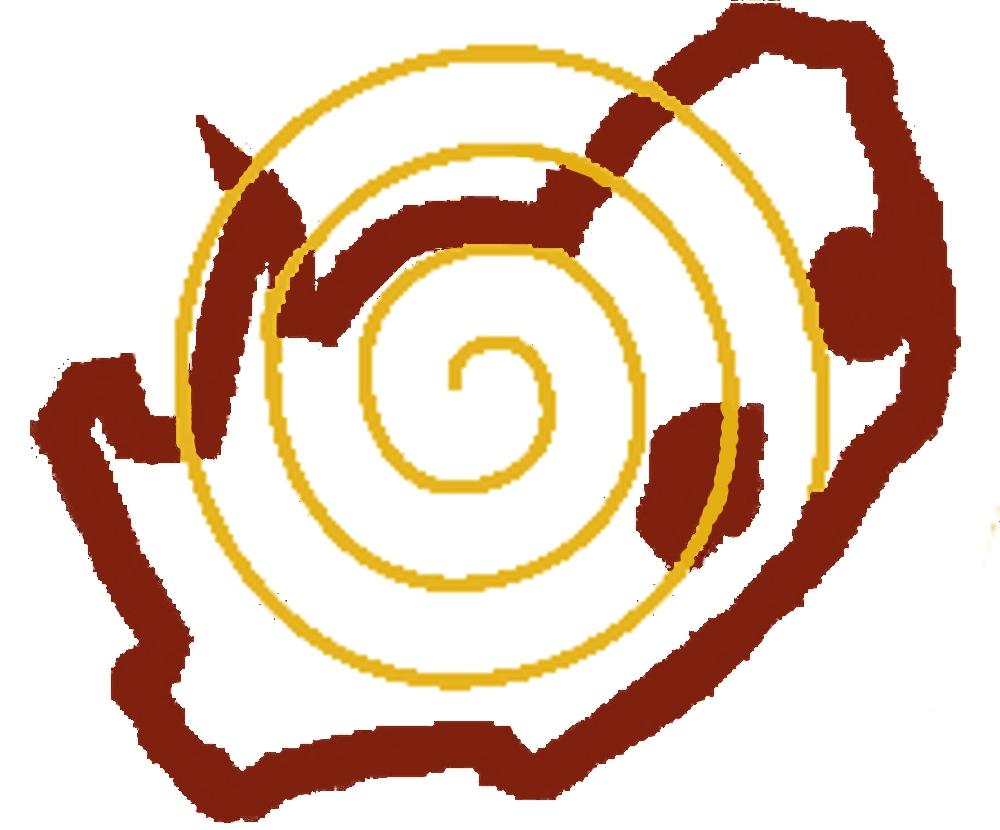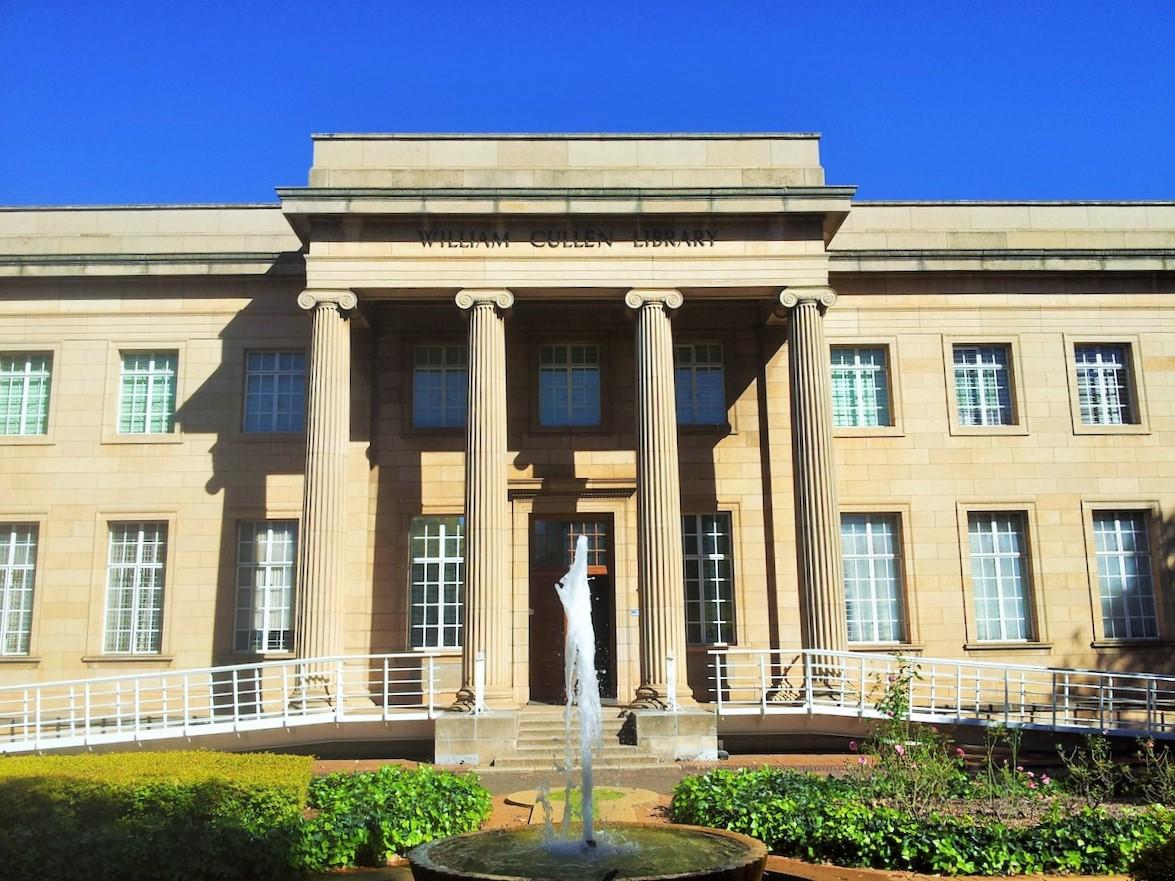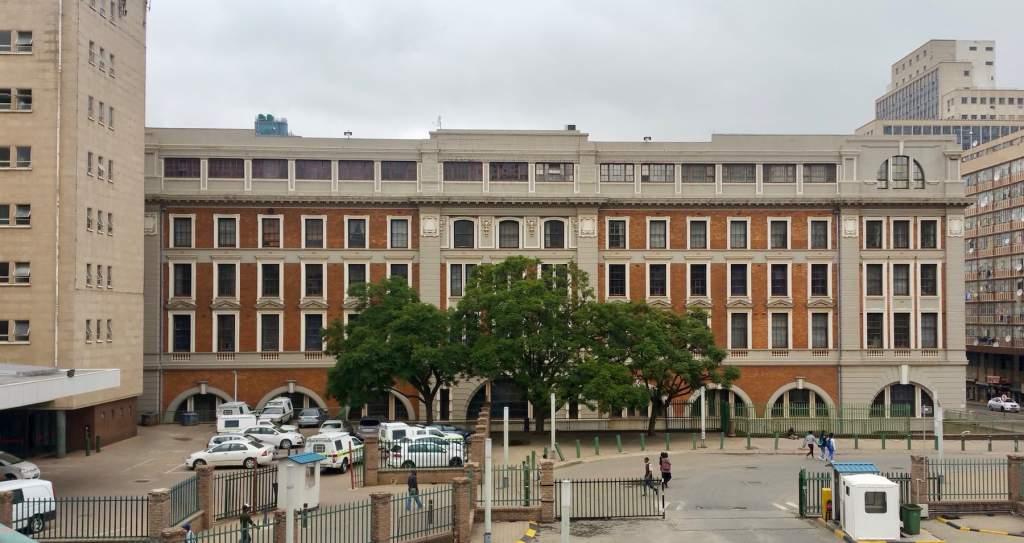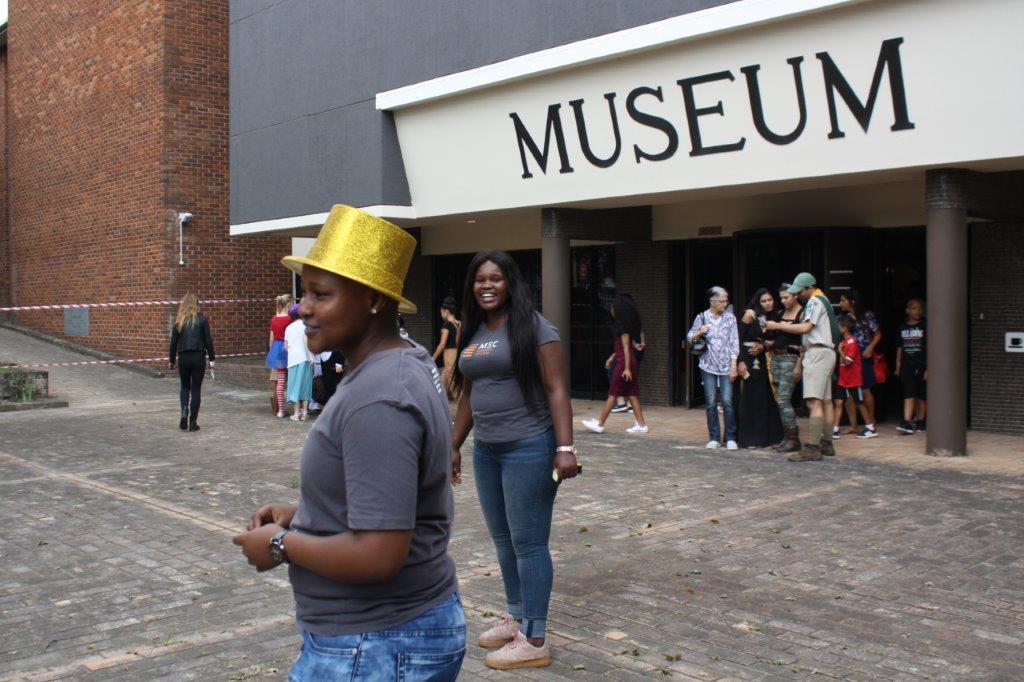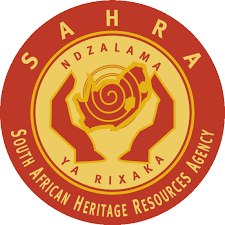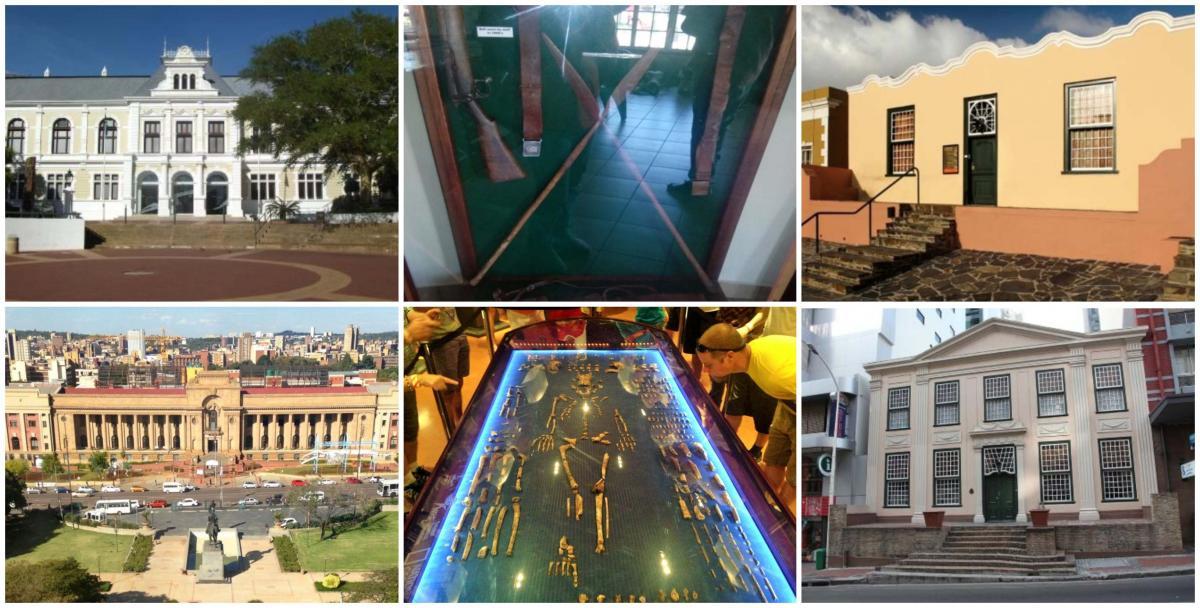
Disclaimer: Any views expressed by individuals and organisations are their own and do not in any way represent the views of The Heritage Portal. If you find any mistakes or historical inaccuracies, please contact the editor.
There are many heritage objects housed in State aided or supported entities such as museums, governmental departments, and other state organisations. These institutions are responsible for safe-guarding and looking after the heritage objects in their custodianship on behalf of the public. Heritage objects portray material evidence of the people and their environment, as such, they should be cared for and conserved, due to their lasting value and provision of evidence of the origins of South African society. Heritage Objects are valuable, finite, non-renewable and irreplaceable, they must be carefully managed to ensure that they are accessible to future generations. However, applicable evidence in the management of heritage objects, especially housed in some State aided or supported bodies, present a worrying situation. This paper looks at some of the concerns regarding the management and conservation of heritage objects in the custody of State aided or supported bodies. It explores challenges and obligations within the applicable legislations facing State departments or aided entities, lessons learned from tertiary institutions, as well as possible partnerships to share knowledge in safeguarding heritage objects and collections.
Museum Africa has experienced several challenges over the years (The Heritage Portal)
1. Legal framework governing the management of heritage objects
It is intrinsic that museums are established to acquire and conserve heritage objects on behalf of the public. Public or State funded/supported museums draw their mandates from different National Departments, Provincial Departments and Municipal government, as there is no single legislation that directly provides a framework for the establishment of museums in South Africa. Many museums are members of organisations such as South African Museums Association (SAMA), International Council of Museums (ICOM) and function under the guidance of the International Centre for the Study of the Preservation and Restoration of Cultural Property (ICCROM). These organisations provide standards and criteria on how museums should look after their collections or cultural properties. Historically, museums were tasked with the acquisition and conservation of heritage objects. However, the management of heritage objects has evolved and overlapped with other institutions, such as State departments and entities, tertiary institutions, and private institutions that do not function according to museum standards. These institutions are the custodians of heritage objects. It is clear that whereas these institutions’ basic mandate is not directly to acquire and conserve material evidence, they are required to play an important role in the conservation and preservation of heritage objects that have been accumulated since the formation of the institution. Therefore, it is important to examine the legal framework governing the management of heritage objects in South Africa.
Many museums are members of organisations such as SAMA & ICOM and function under the guidance of (ICCROM)
The management of heritage resources is mainly governed by the National Heritage Resources Act (NHRA), 25 of 1999 (NHRA). The NHRA outlines the roles and responsibilities for the management of heritage resources. In addition, section 5 of the NHRA provides basic principles of heritage resources management that must be observed. Section 9(3)(a) of the NHRA specifies that each State department and supported body must maintain and conserve the heritage resources under its control in accordance with standards and procedures set out in regulations by SAHRA. It is clear from the provision that State departments and supported bodies that house heritage objects have an obligation to maintain and conserve the heritage objects in their custody. The SAHRA has published Regulations in accordance with the provisions of section 9(3) of the NHRA. Therefore, the NHRA provides a framework for the conservation and maintenance of heritage objects. The obligations are imposed on all State departments and supported bodies, regardless of whether such institutions have been established primarily to look after heritage objects or not. Therefore, applying of standards in the maintenance and conservation of the objects is essential to ensure that heritage objects are accessible to future generations. Standards are requirements based on international best practice that inform institutions that house heritage objects of the many different factors of which they must be aware to fulfil their obligation as custodians of heritage objects that form part of the National Estate of the country.
2. Factors to be considered in the management of heritage objects
Heritage objects are diverse and differ in material, texture, shape, size, and context. This diversity presents challenges to many curators and other heritage practitioners tasked with their management as they must apply plans and techniques to conserve and maintain the objects. The conditions are more concerning where State departments and supported bodies housing significant heritage objects’ mandate is not the collection, preservation, and storage of heritage objects such as a museum. However, as noted in terms of the NHRA, it is the responsibility of the State departments or supported bodies to look after the objects, regardless of whether such institution render museum services or not. To fulfil their obligations, State departments and supported bodies must factor in expertise and a budget for the management of heritage objects in their custody as set out in Regulations drafted by the SAHRA.
2.1. Internal factors
Internal factors are those that can be controlled by the organisation. These may include financial resources, human resources, and physical resources. These factors are crucial in the management of heritage objects. Failure to observe these may result in the damage, loss, or deterioration of heritage objects. A balance needs to be maintained to ensure that institutions do not hinder their mandated function with their responsibility as custodians. In many institutions it has been observed that a large portion of the financial resources are allocated to payments of employees and payment of the bills. Little or nothing is budgeted for the continuous maintenance and preventative conservation to prolong the lifespan of heritage objects. Some of the institutions would argue that their mandate is not to look after the objects and in some instances, they are considered to either be sold or given away. It is expected of them to take appropriate measures and to allocate a portion of their financial resources to maintain and conserve heritage objects in their custodianship.
Other internal factors that need to be observed include allocation of appropriate space, storage, and expertise. To minimise the risks of damage and deterioration, State departments and supported bodies must obtain expert conservation advice to assess and understand the environment in which the collections are housed or displayed. In many circumstances, objects are left lying around on the floor or cramped in a small area without proper care, which poses a significant risk to the preservation of objects or collections. It is important for the responsible person to ensure that a conducive environment is created for the management and conservation of the heritage objects. The South African Heritage Resources Information System (SAHRIS) has been enabled as a tool for management of heritage resources, including heritage objects, that can be used to inventorise heritage objects and collections according to international standards. State departments and supported bodies must inventorise their objects/collections as the first measure of security. In the event that an object is lost/stolen, there would be a record of the object/collection that may aid in any investigation and return of the object. The SAHRA can provide training and assistance to any institution wishing to embark on the inventorisation of its collections.
2.2. External factors
External factors refer to elements that are outside the organisation or institution’s control. State departments and supported bodies are nonetheless required to observe and mitigate these factors to ensure proper management of heritage objects. Failure to observe or take appropriate actions can endanger heritage objects that have a significant cultural value. During the Rhodes must fall campaign, the indiscriminate vandalization of artworks and sculptures associated with historic events and leaders in the history of South Africa as well as the impact of the Covid-19 pandemic are good examples of external factors which organisations must guard against. These could be done by proper risk assessments that must include appropriate action that will ensure that the risk is minimised. Section 5(1)(d) of the NHRA states that, heritage objects management must guard against the use of heritage for sectarian purposes or political gain. One other big challenge that tertiary institutions are faced with is the issue of student protests, where buildings get burnt, vandalised and damaged. In future, we foresee a situation where the buildings housing heritage objects may be destroyed because of the above factors, unless appropriate measures are in place to mitigate these risks.
Tertiary institutions like Wits house highly significant heritage objects (The Heritage Portal)
3. Challenges faced by State departments and supported bodies
Since the promulgation of the NHRA, minimal effort has been made by some institutions to safeguard and look after their heritage objects, be it in a museum or a State institution. Implementation of the legislation particularly, sections 9 and 39, have been a challenge. The impact of not adhering to the legislation poses a significant risk to these heritage objects. In other words, these objects may be damaged, and might be lost forever. This also applies to all institutions housing specifically declared objects. SAHRA is currently reviewing section 9 Regulations to include standards that would guide the management of heritage objects in the custody of State departments and supported bodies. It is alarming to note that some specifically declared objects and collections are not looked after according to international standards. In some instances, there are not enough storage to house them, no dedicated persons looking after them, no preventative measures in place nor a conservation policy or plan to aid in the process of looking after these objects.
The priceless Transnet collection, held in this building in downtown Johannesburg, is being preserved by passionate volunteers (The Heritage Portal)
Heritage objects/collections that were declared as movable monuments or treasures under repealed legislations are specifically declared objects under the NHRA. During the time when these objects were declared there were no requirements with regard to conservation and preservation measures for these heritage objects/collections. Under the NHRA there are requirements on how to look after these heritage objects/collections. It should be noted that it remains the responsibility of the owner or custodian of the heritage object/collection, to comply with the legislation to look after the heritage objects/collections that are in their custody. During monitoring of some of these heritage objects/collection by SAHRA officials, it transpired that either the object is not looked after according to standards or the staff in the museum are not aware that they are housing a declared object. Hence these heritage objects do not receive the attention that they require and are not looked after according to best practice.
Section 32 of the NHRA, stipulates the responsibilities of the owner/custodian housing a Specifically declared object. To mention a few, no person may repair, alter, carry out any restoration work, export any heritage object without a permit issued by SAHRA. The owner/custodian of a heritage object must report immediately any loss or theft of a heritage object/collection to SAHRA. The owner is required to inform SAHRA of the new address should the heritage objects be sold to another person. Organisations are required to address the following challenges:
3.1. Storage area
A storage area is an integral part in the management of heritage objects. In many cases, institutions focus mainly on the display area. However, there is a need for the objects that are not displayed on a regular basis to be stored in appropriate storage facilities. Objects should not be cramped together, the accessibility to the storage areas should be monitored and regulated. In many instances, it was evident that many people within the institutions had access to the keys and storage areas, and there have been claims that some of the former employees have “taken” some of the objects. Museums, State departments and entities housing heritage objects must incorporate within their policy, who has access to the storage area and regular checks must be made of the inventorised objects in the collection.
Storage areas should comply with minimum standards for the type of objects stored. Security measures, ventilation, pest control, smoke detectors, cleaning programme are among the factors to be considered when deciding on storage facilities. It is the responsibility of dedicated staff members to be innovative in managing the storage area, especially where there is a lack of adequate resources to apply minimum nationally and internationally accepted standards.
3.2. Documentation and inventories
Documentation refers to material that provides official information or evidence that serves as a record relating to the heritage objects. Without proper documentation (conservation assessment or regular reports), heritage objects are treated like any other objects.
UNESCO advocates the absolute need for rigorous organisational documentation systems, to prevent collections from becoming worthless. Whilst it can be argued that many organisations have one or a few methods of documentation, there are still many State departments and State bodies that are still lacking adequate forms of record keeping. SAHRA has developed SAHRIS which is a free platform that can assist with documentation of collections. For reasons unknown, there is a reluctance by institutions to adopt SAHRIS even though they do not have any system, and some prefer to pay service providers exorbitant fees to inventorise their collections. Section 9(2) of the NHRA is clear and requires all branches of the State and supported bodies, to make available for its use and incorporation into its data base any information which it has on record on heritage objects under its control. To date only a few branches of State have made information available regarding the heritage objects on record as well as inventorised their objects/collection.
3.3. Lack of funding for heritage objects conservation
Over the years, little to no funding has been allocated for the conservation of heritage objects. Competing needs within organisations has rendered the conservation requirements at the bottom of the list of priorities. There are no funds dedicated to undertaking preventative conservation or proper management of heritage objects. There does not seem to be any standard method or model to which to refer when allocating funding for heritage conservation. Generally, Institutions are under-funded, even those that fall under the Cultural Institution Act, leaving many significant heritage objects to deteriorate. Institutions are required to compile conditional assessments and/or conservation management plans to adequately manage and conserve their heritage objects. Many institutions are unable to appoint a skilled conservator to undertake conditional assessments or management plans. As a result, objects/collections are managed without the necessary skills that are required to assess the condition of the objects/ collection. In addition, where some of the institutions have managed to compile management plans, there are not enough funds to implement the recommendations made to effect these plans. The plans become redundant and are ultimately either lost or remain entirely ineffectual.
Regardless of budgetary constraints, and an absence of a budgetary allocation for conservation, institutions are still expected to apply best practice to conserve the objects. Preventative conservation prevents damage and deterioration of objects caused by adverse environmental conditions, incorrect handling as well as their inherent physical structure. Therefore, heritage practitioners are required to be innovative and to refer to organisations such as SAMA to acquire the necessary skills. Each State department and supported body must submit annually to SAHRA a report on the maintenance and development of such resources. Maintenance and development of heritage objects form an integral part of heritage objects management. As stated in ICCROM Conservation studies, on the power and obligation relating to the management of heritage objects, there is a need for the provision of key management tools to managers and for the introduction of management plans to ensure the preservation of heritage values.
3.4. Succession planning
Institutions do not make provision for succession planning. Experienced employees are left to retire or resign and because there is no succession planning, it leaves a huge void within the organisation when the successor is eventually employed and oriented. Generally, the succession planning process is not considered a priority by State departments or State aided entities especially when considering that critical scarce skills are rare by definition. Once there is a vacancy of a critical role, the proper management of heritage objects is compromised. Some of the institutions do not fill vacant posts due to a lack of funds or inexperienced employees are left to assume the responsibilities without appropriate training. It is important for State departments and supported bodies to prioritise succession planning in their planning process.
4. Obligation and Compliance
State departments or supported bodies are required to comply with the requirements in terms of the NHRA, and regulations as well as policies approved, thereafter. By complying with the required regulatory measures, SAHRA is able to monitor and assist State departments and supported entities in the management of heritage objects. Collaboration and sharing of skills between institutions and entities can help to alleviate some of the challenges presented in this paper. SAHRA encourages organisations that house heritage objects to establish platforms with other institutions which have the necessary skills and knowledge in the conservation and management of heritage objects. Higher institutions should also be requested to guide on best practices based on the latest research. For instance, if there were partnerships formed between these institutions one would see good management of heritage objects/collections. Institutions that do not have proper facilities and resources would have been able to get assistance from well-resourced institutions. An example in this regard can be drawn on from one tertiary institution, Walter Sisulu University in the Eastern Cape that has a declared collection. Since they do not have the expertise to look after the declared collection, a Memorandum of Understanding was signed between the said institution and the East London Museum (ELM) as well as SAHRA. The agreement clearly stipulates that if the institution requires any assistance, they shall seek guidance from ELM in consultation with SAHRA. However, it should be noted that even though there is an agreement signed by the three institutions concerned, it is the responsibility of Walter Sisulu University to implement the agreement, accordingly.
State departments and supported bodies must develop policies or could incorporate management of the heritage objects/collections in their custody, within their existing assets policies. This will ensure that the management/executive are held accountable and are aware of the existence of significant heritage objects/collection that form part of the national estate, within their organisation.
Event at the East London Museum (ELM)
5. Conclusion
As stipulated in the NHRA, our heritage is unique and precious, and it cannot be renewed. Therefore, it is the responsibility of all State departments and State aided entities to ensure that heritage objects/collections are managed and conserved according to international standards, for future generations. SAHRA, as a regulatory body, has identified gaps in the institutions that are housing heritage objects. It is hoped that by applying an integrated and interactive system for the management of heritage objects/collections that this would contribute to their conservation and preservation. To achieve the objectives of the NHRA, State departments and State aided entities must work together with SAHRA and any other institutions to promote good management of heritage objects/collections, and enable and encourage communities to nurture and conserve their legacy so that it may be bequeathed to future generations.
Nolitha Ngcai and Themba Monnye of the South African Heritage Resources Agency’s Heritage Objects Unit, made a presentation to the South African Museums Association Conference held on 28 October 2021 that was subsequently adapted for publication in the Heritage Portal by Regina Isaacs, Nolitha Ngcai, Themba Monnye and Cuan Hahndiek.
References
- Hosford, J, 2019: Preventive Conservation Manual.
- ICCROM, 2009: Cultural Heritage and the Law: Protecting immovable heritage.
- National Heritage Resources Act 25 of 1999.
- South African Museums Association, 2006: Professional Standards and Transformation Indicators.
Comments will load below. If for any reason none appear click here for some troubleshooting tips. If you would like to post a comment and need instructions click here.

